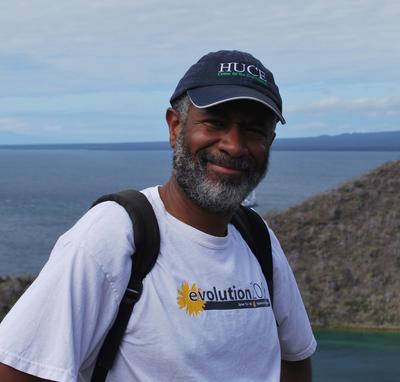
Scott's interest in ornithology and natural history began as a child growing up in Riverdale, Bronx, NYC, where he undertook his first job in environmental science working for an environmental institute called Wave Hill. He received his undergraduate degree from Harvard in 1986. As an undergraduate, Scott took a year off from his studies to learn what it is biologists do - he spent 6 months volunteering at the Smithsonian's National Museum of Natural History in Washington, DC, then gained his first field experience assisting with research on the natural history and conservation of native birds in Hawaii and northern California. He returned to Harvard to finish his degree, and enrolled in the PhD program in the (then) Zoology Department (now Integrative Biology) the University of California, Berkeley. During his first year as a graduate student, he spent 10 months in New Guinea and Australia first volunteering in research on ecology of birds-of-paradise and later striking off on his own to embark on what would become his dissertation project, a study combining of the genetics and population structure of a group of cooperatively breeding songbirds called babblers (Pomatostomus) found throughout Australia and New Guinea. He received his PhD in 1992.
Scott did postdoctoral research as an Alfred P. Sloan Postdoctoral Fellow in Molecular Evolution at the University of Florida, Gainesville, working under Wayne Potts (now at University of Utah) and Ward Wakeland (now at UT Southwestern Medical Center). There he switched modes to study the evolution of genes involved with disease resistance in wild birds. Such genes play an important role in many aspects of avian biology, including parasite resistance, plumage color variation and mate choice. In late 1994 he assumed an Assistant Professorship in the Department of Zoology (now Biology) at the University of Washington in Seattle, where he was also Curator of Genetic Resources at the Burke Museum . During his 9 years at the U. Washington, he continued his studies of immunogenetics and population genetics of birds, funded by several grants from theNational Science Foundation and the National Geographic Society's Committee for Research & Exploration , and is proud to have published five papers with undergraduates as first authors during that time. He has served on the Editorial Boards of Journal of Molecular Evolution , , American Zoologist (now Integrative and Comparative Biology), Systematic Biology, Molecular Biology and Evolution,, and Conservation Genetics. He served on the Councils and President of the American Genetic Association (2011) and Society of Systematic Biologists (2006). In 2012 he served as President of the Society for the Study of Evolution, where he worked to expand the Society’s mission in research and outreach, through its annual meeting and its journal, Evolution. He helped initiate the landmark meetings in Brazil in 2015. He has served on several NSF panels and on the National Geographic's Committee for Research & Exploration from 2001-2009. He also received NSF funds for an ongoing program to enhance undergraduate diversity at the annual meetings for the Society for the Study of Evolution and is actively engaged in increasing student diversity in the environmental and evolutionary sciences.
He moved to Harvard University in late 2003 as a Professor of Organismic and Evolutionary Biology and Curator of Ornithology in the Museum of Comparative Zoology , where he continues efforts to unite genomics and natural history and involve students at all levels. His current major interests include multilocus phylogeography and speciation in birds; genome evolution during the transition from reptiles to birds; host-pathogen interactions (such as the house finch-Mycoplasma epizootic) and the evolutionary consequences of disease outbreaks; and statistical models for inferring multilocus phylogenies and historical demography.